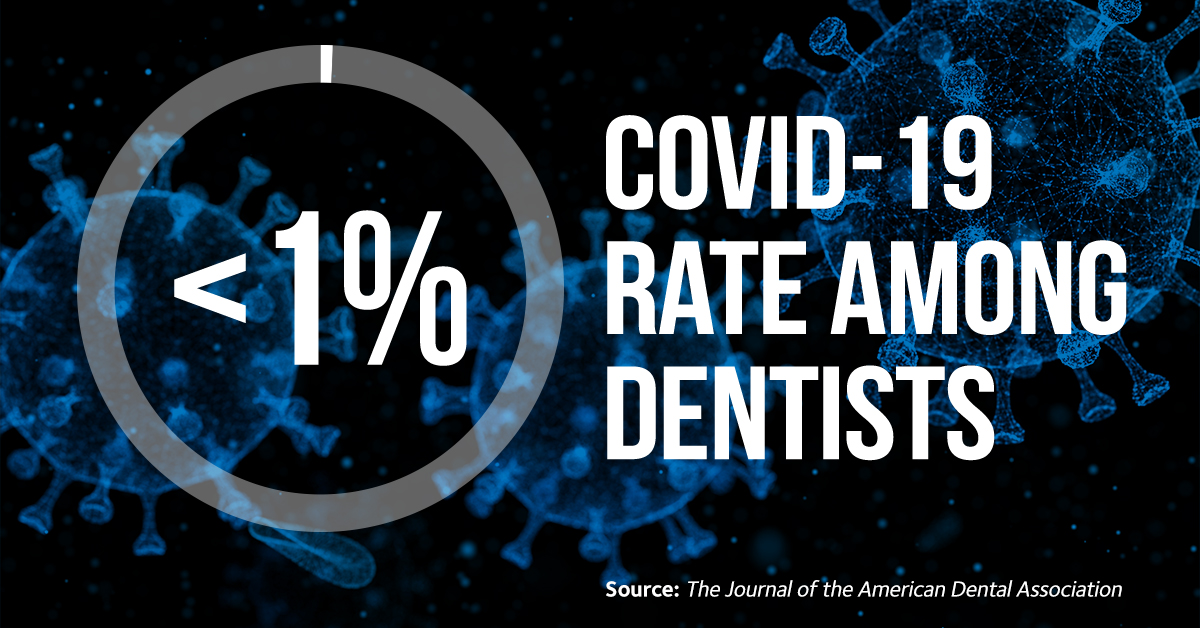Study Shows 1% of Dentists Had COVID-19, Indicating Low Risk to Visit Dental Offices
According to the American Dental Association, it’s very safe to visit your dentist. The prevalence of COVID-19 among U.S. dentists is estimated to be fewer than 1%, indicating that infection control measures likely are enough to cut exposure risk at practices, according to an American Dental Association Science & Research Institute (ADASRI) and Health Policy Institute study published on October 15.
“Estimating COVID-19 Prevalence and Infection Control Practices Among US Dentists,” published online ahead of print by The Journal of the American Dental Association, is the first large-scale collection and publication of U.S. dentists’ infection rates and infection control practices related to COVID-19, according to the ADA.
“This is very good news for dentists and patients,” said Dr. Marcelo Araujo, Ph.D., CEO of the ADASRI, chief science officer of the ADA and senior author of the report. “This means that what dentists are doing — heightened infection control and increased attention to patient and dental team safety — is working.”
“Understanding the risks associated with COVID-19 transmission in the dental setting is critical to improving patient and dental team safety,” Dr. Araujo said. “This study brings us another step forward in understanding what works. Dentists are following ADA and U.S. Centers for Disease Control and Prevention guidance, and it’s helping to keep the dental team and their patients as safe as possible.”
Interim guidance from both the ADA and CDC calls for dental professionals to use the highest level of personal protective equipment available, including masks, goggles and face shields. To minimize aerosols, the ADA guidance also recommends dental professionals use rubber dams and high-velocity suction whenever possible and hand scaling instead of ultrasonic scaling when cleaning teeth.
The researchers found that 99.7% of the dentists surveyed said they had implemented enhanced infection prevention and control procedures, including disinfecting all equipment and surfaces that are commonly touched, checking staff and patient temperatures, screening patients for COVID-19, encouraging distance between patients while waiting, and providing face masks to staff.
The authors of the study are continuing to collect infection rate data, and they have added dental hygienists to their ongoing survey, in collaboration with the American Dental Hygienists Association.
To learn more about this study, visit this news article published recently by the American Dental Association.


